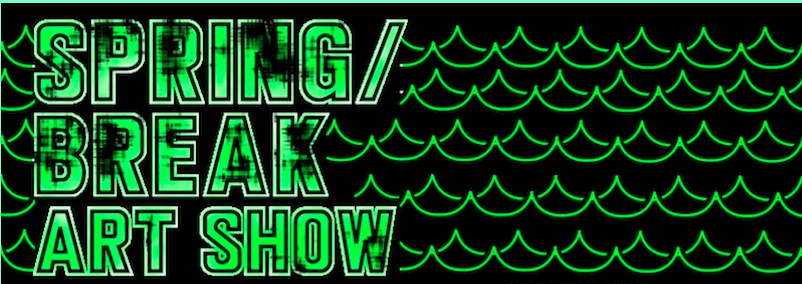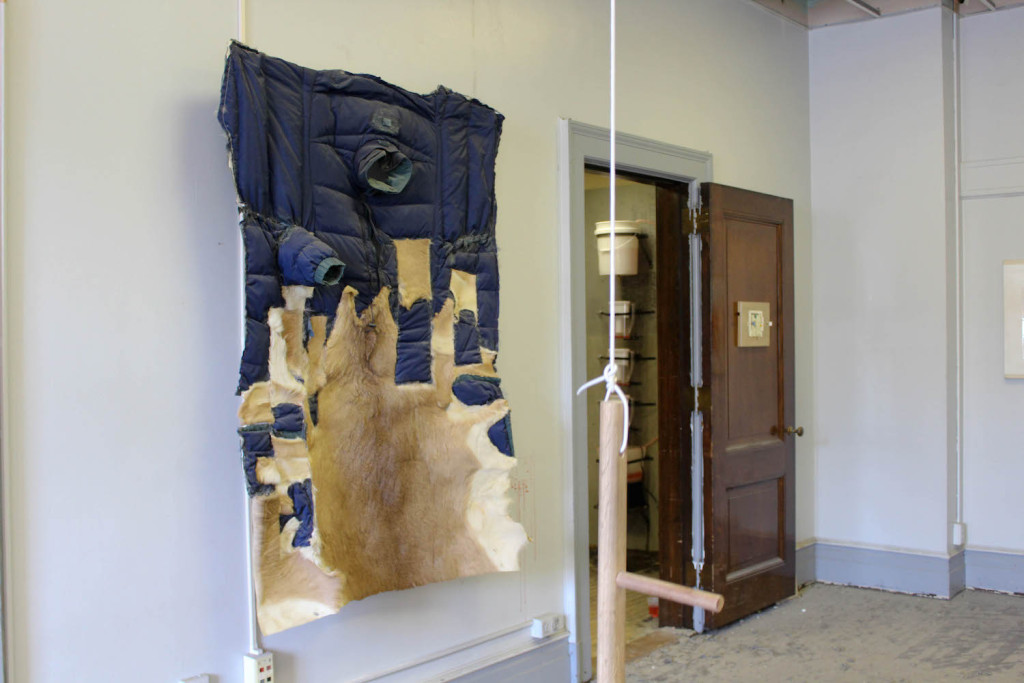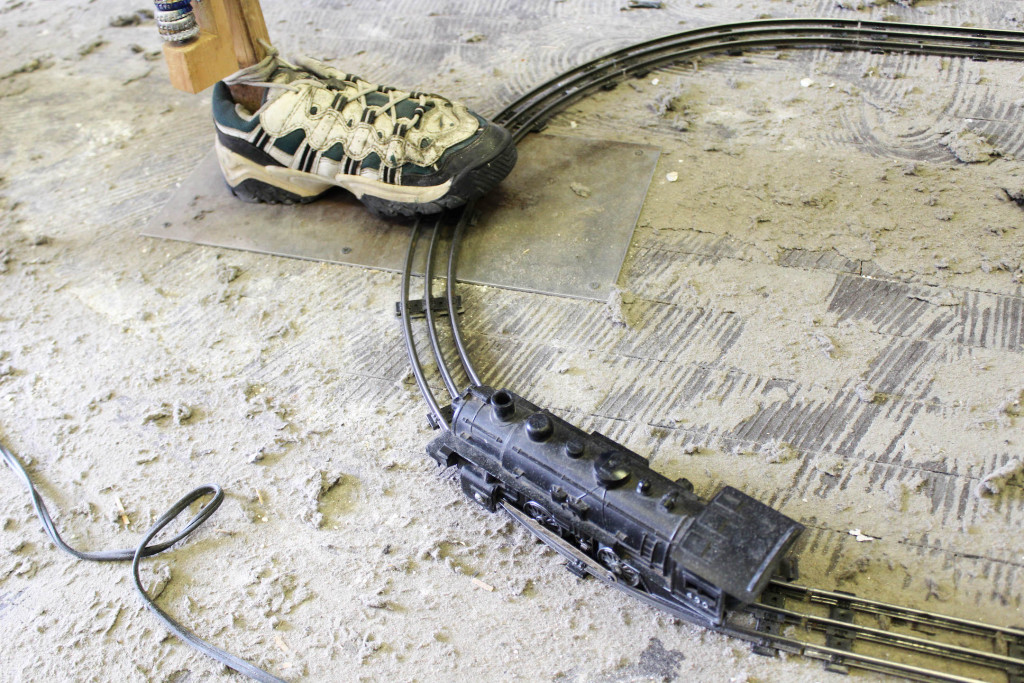It may be back to school, but the question is: Where did you go for SPRING/BREAK? Did you go to Cancun or the Skylight at Moynihan Station? In its fourth year the SPRING/BREAK art fair left the school in Nolita where it was located previously in favor of abandoned offices of the US Postal Service parallel to Penn Station. The fair grew exponentially to *97 curator represented spaces and 400 artists. Ranging from small galleries who were not included in other fairs to specifically curated projects by independent curators and artists functioning as curators. The rooms varied and when entering each space it was relatively easy to forget that this was happening in midtown, one of the busiest parts of Manhattan. The most detrimental part of SPRING/BREAK this year, was just that it was, in my opinion, too big. When in a booth or open format visual situation, it is easier for visitors to meander between galleries and choose which artworks to focus on. The closed installation of SPRING/BREAK, doesn’t allow for this and one must choose which rooms to enter and which to walk past. It’s nearly impossible to go into every room without spending a full day to truly absorb what one is seeing and still being an emergent fair, it isn’t necessarily yet worthy of a full day of time. The downtown location was much more size appropriate and spatially manageable. The Skylight at Moynihan Station also has a certain musty scent that was not appealing. All that being said, I spent at least four hours walking the long hallways and chatting with many friends and acquaintances who were taking part. Photographs from these rooms are below. Congrats to all the artists, many of who are not represented by galleries, you got new eyes on your work! That is really most important. Also, big shout out to the founders of SPRING/BREAK Andrew Gori and Ambre Kelly, The They Co., who have succeeded in growing the fair since 2009 without charging artists for exhibition spaces. It is by far the most democratic fair. Let’s just hope that the location next year is either cleaned up or a different venue. I’m all for gritty, unused or underused spaces in New York, although when looking at art, we must remember that every detail becomes relevant in the experience, positive and negatively effecting what is being looked at. All that said SPRING/BREAK, as always had great work and energy. It’s where the cool kids not only hang out, but get dirty.
Below are some of the Top Picks from SPRING/BREAK 2015.
Art should be about fun…at least some of the time. The women behind SORRY, a curatorial platform, seem to know this. Their room at the Moynihan Station was explosive. They used the degradation of the room to communicate with the visitor in a fun and eclectic way. Work ranged from mixed media wall-hangings, to mechanized sneaker stomping sculpture to a kool-aid beverage dispenser. Yeah.
At SPRING/BREAK in the Moynihan Station, occasionally the space dictated (or limited) projects and installation possibilities and other times, it led to a site-specific artwork. The latter was the case with curator Rachel Valinsky and artists Aaron Gemmill and Sam Payne. This particular curatorial project confronted spatial mapping. Dealing directly with the greater New York area, Gemmill made what appear to be drawings, but are actually made using a printing plate and abstracted transit map. In this particular body of work titled, to live where others pass (nest) series, the artist had a multi-process way of working, tracing patterns, maps and even human presence, resulting in something that he actually has very little physical interaction with. On the opposite end, Sam Payne was once asked to remove tiles from an exhibition space in New York. He chose to collect the remnants and pieced together what he could find to form 1,820 lb Gambit, a floor ‘extracted and installed’. The piece was one of the strongest in SPRING/BREAK, directly repurposing the materials from another art venue and reinstalling with the same intention they originally had. The piece creates a false memory in the same way that we re-enter or revisit a space that we had never been too. The disorderly organization of the pieced together tiles and the irregularity of the surface of the floor, were a subtle yet effective intervention. Also placed on the tiles were pieces of fruit, recalling the 2011 exhibition by David Adamo at UNTITLED (ceramic fruit based on actual fruit the artist tossed in the studio) and Mario Merz, Tavola a spirale (Spiral table), 1982 (fruit and vegetables places on a spiral table allowed to age). There is so much history in death.
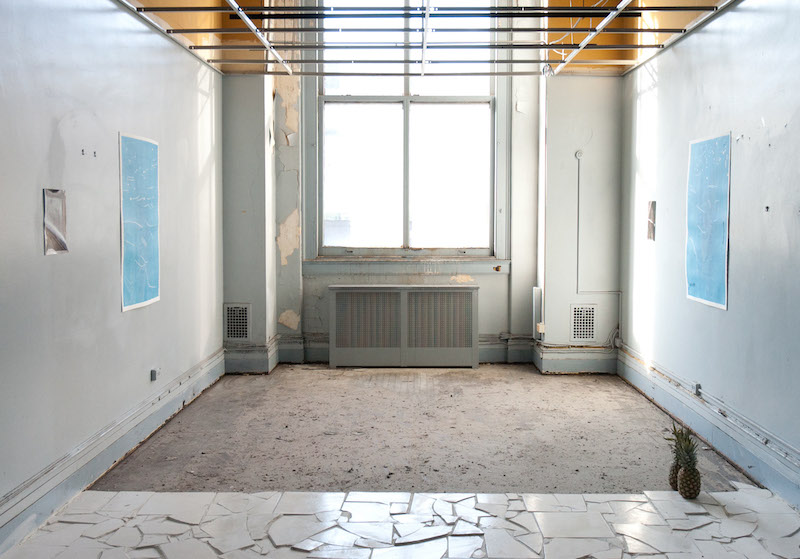
Installation view, Aaron Gemmill (wall) and Sam Payne (floor), Photograph by by Samuel Draxler, Curated by Rachel Valinsky at SPRING/BREAK, 2015
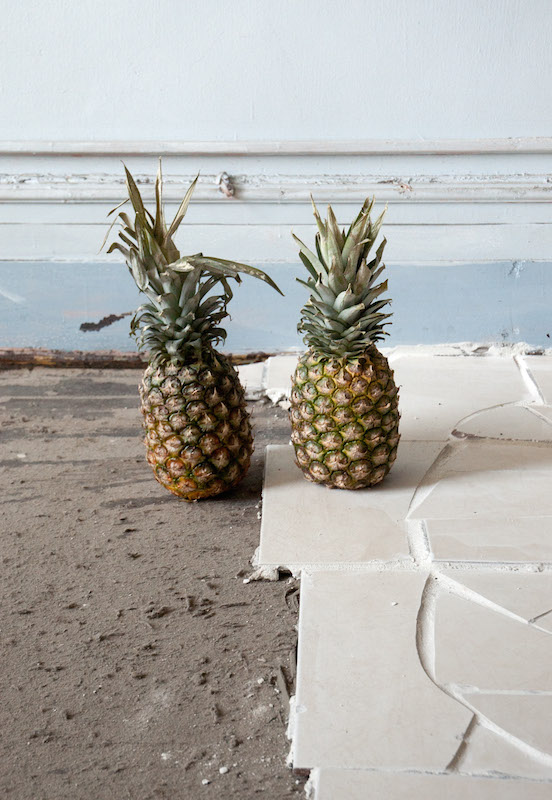
Detail: Installation by Sam Payne, Photograph by by Samuel Draxler, Curated by Rachel Valinsky at SPRING/BREAK, 2015
Ego-State, curated by Kara Brooks. Brooks brought together a group of artists working in small-scale collage, subjectively concerning the self. She also did a fantastic job in turning the room into a real “gallery”. From the press release: The title “Ego-State” is derived from Canadian-born psychiatrist Eric Berne’s theory of personality: Transactional Analysis. Developed in the 1950’s and now one of the most accessible concepts of modern psychology, Transactional Analysis can be simply explained as the method for studying interactions between individuals.

Kubi Vasak, Comfort of Sorrow, Collage, framed, from Ego-State, curated by Kara Brooks, SPRING/BREAK, 2015
The Ecstasy of Influence, assembled a small group of artists around the text by Jonathan Lethem published in Harper’s Magazine in 2007 titled “The Ecstasy of Influence, A plagiarism”. The text, printed in excerpt in the press release, highlights the influence that artists have from mentors and all those who have come before. “Inspiration could be called inhaling the memory of an act never experienced. Invention, it must be humbly admitted, does not consist in creating out of void but out of chaos. Any artist knows these truths, no matter how deeply he or she submerges that knowing.” Big ideas that seem to extend beyond that of an art fair, maybe this platform similarly to the artist and teacher will lead to more ambitious projects for Progress Report (Kris Chatterson and Vince Contarino).
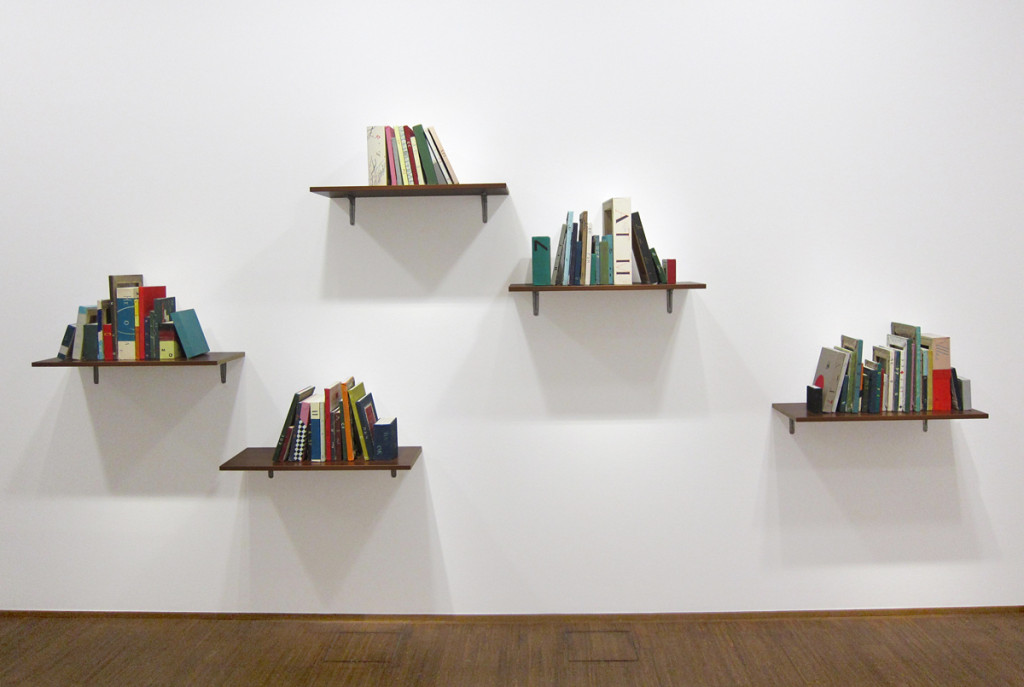
Daria Irincheeva, Empty Knowledge, Installation view from The Ecstasy of Influence, Curated by Progress Report (Kris Chatterson and Vince Contarino), SPRING/BREAK, 2015
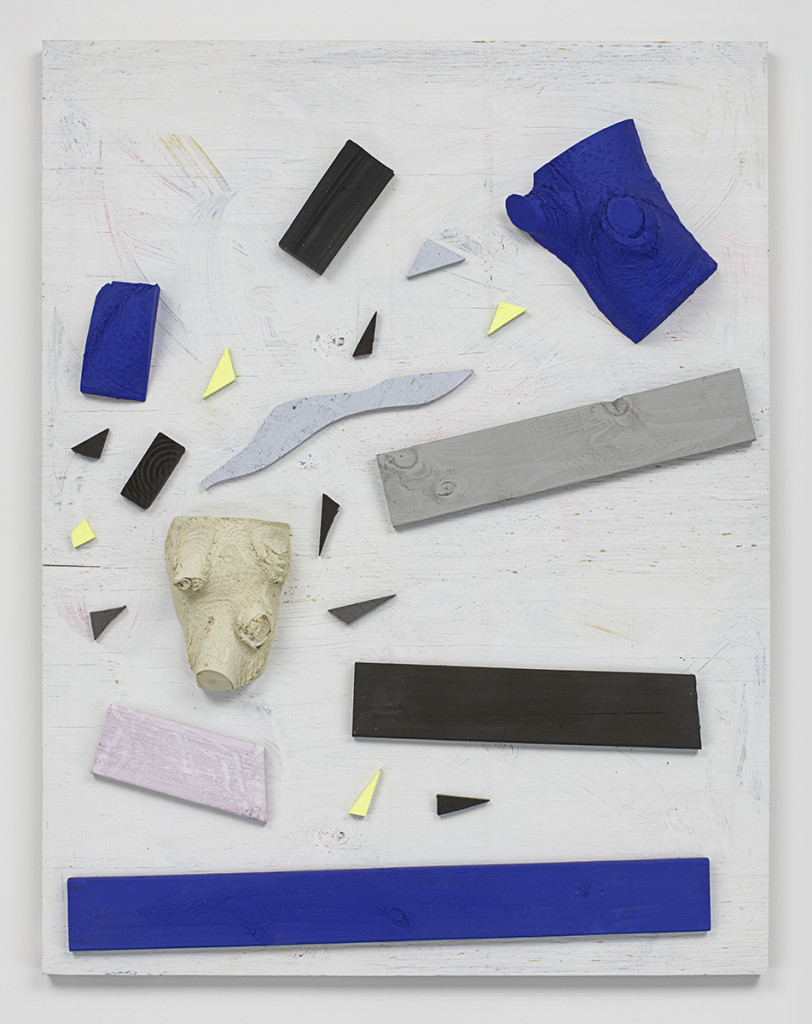
Ivin Ballen, Untitled work, Installation view The Ecstasy of Influence, Curated by Progress Report (Kris Chatterson and Vince Contarino), SPRING/BREAK, 2015
The 27th Dimension, Curated by Jennifer & Kevin McCoy with The Sun That Never Sets (Vanessa Albury + Rachel Rampleman) featured works by Man Bartlett, Jennie Hagevik Bringaker, Peter Clough, Brody Condon, João Enxuto & Erica Love, LoVid, Clement Vala, Vanessa Albury, Rachel Rampleman and Jennifer and Kevin McCoy, including Monegraph a platform to authenticate digital art. The exhibition focused on digital and video artists who ‘are exploring physical and material relationships’ through various media as a way to engage physical versus virtual space. This was one of the few booths that dealt with what could be described as the ramifications of post-internet art and a spiritual energy that is directly connected to the human body.

Peter Clough, Lineament, Single-channel video (shown on monitor), The 27th Dimension, Curated by Jennifer & Kevin McCoy with The Sun That Never Sets (Vanessa Albury & Rachel Rampleman), SPRING/BREAK, 2015
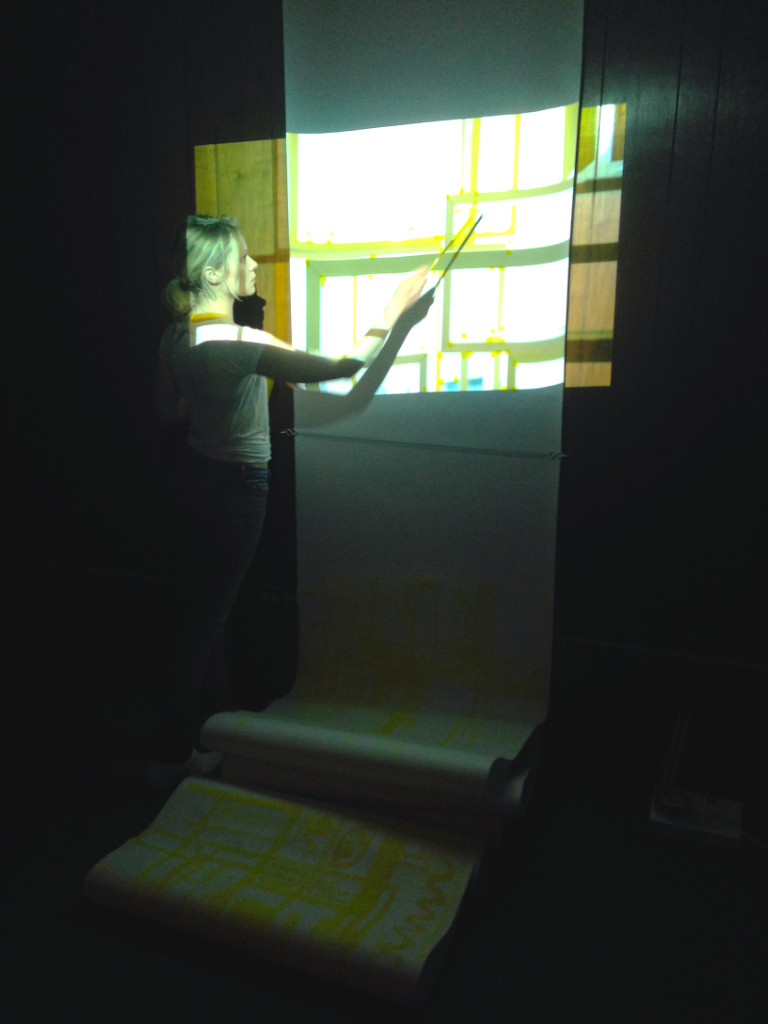
Jennie Hagevik Bringaker, Installation view of sculpture being projected via a Skype feed, being activated by Amelia Saul, The 27th Dimension, Curated by Jennifer & Kevin McCoy with The Sun That Never Sets (Vanessa Albury & Rachel Rampleman), SPRING/BREAK, 2015
Curated by Kari Adelaide and Max Razdow, Apples Turn to Water, was a seven person group show. A delicate thread, invisible, connected each work by way of an aesthetic softness, nondescript but binding it linked the fragility of humanity with nature. Stand-out artists included Jesse Bransford, David Shaw, Lauren Luloff, Max Razdow, Juliet Jacobson, JJ Manford and Jeremy Olson. Others who were in this curatorial space were Ray Johnson, Alexander Nolan and Colin Ruel.
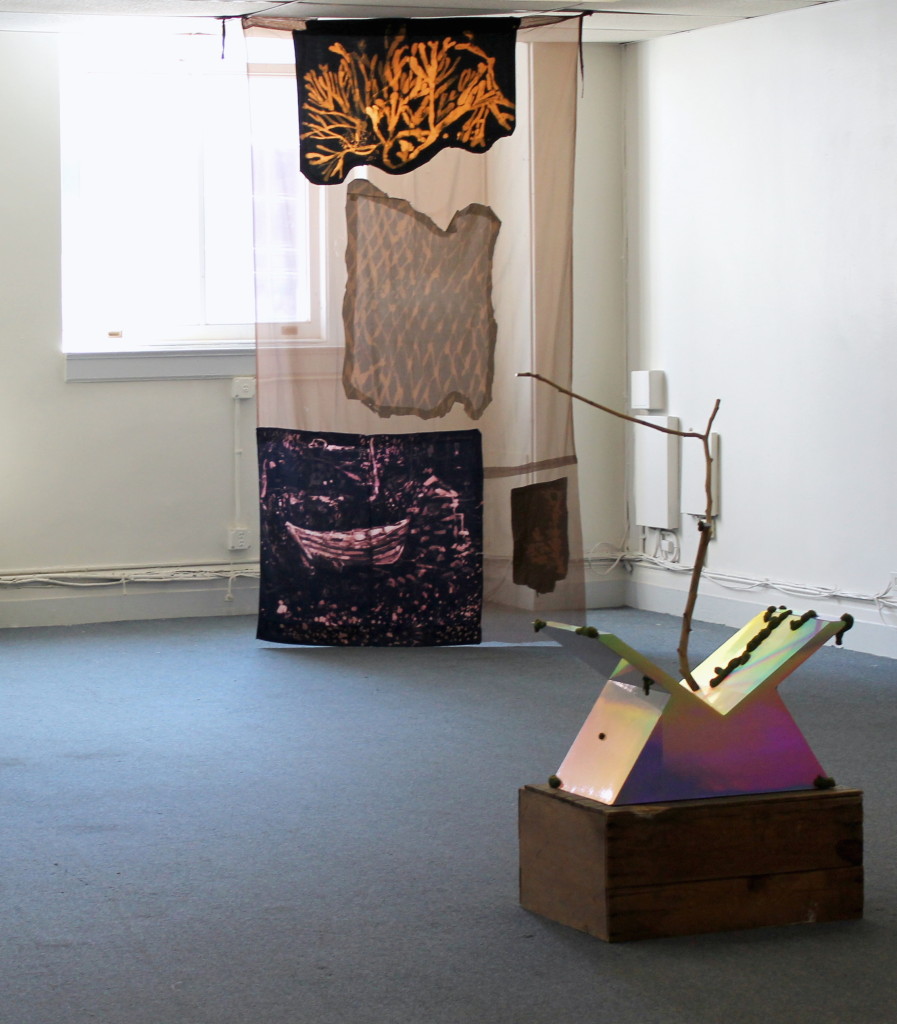
Lauren Luloff, (background) “John’s Dory with Seaweed”, bleached bed sheets and fabric, 9 x 4′, 2012, David Shaw (foreground) David Shaw, “Vast”, Wood, holographic laminate, epoxy, flocking 40.75” x 28.25” x 13.75”, Apples Turn to Water, Curated by Kari Adelaide and Max Razdow, SPRING/BREAK, 2015
![Jesse Bransford, Untitled VI [In Two Parts], Graphite on paper, Curated by Max Razdow and Kari Adelaide, SPRING/BREAK, 2015](https://eyes-towards-the-dove.com/wp-content/uploads/2015/03/Jesse_Bransford_Untitled_VI_In_Two_Parts-633x1024.jpg)
Jesse Bransford, Untitled VI [In Two Parts], Graphite on paper, 2010, From Apples Turn to Water, Curated by Kari Adelaide and Max Razdow, SPRING/BREAK, 2015
xo
*Note, this article originally reported 40 gallery/curators and 150 artists based on information in the About section of the SPRING/BREAK website. It seemed much bigger and in fact it was. With 97 gallery/curators and 400 artists (hence the overwhelming feeling) their website has an error maybe with report from previous years. Thanks Ambre for the correction. Hopefully the SPRING/BREAK website will be updated shortly. Sorry readers!

